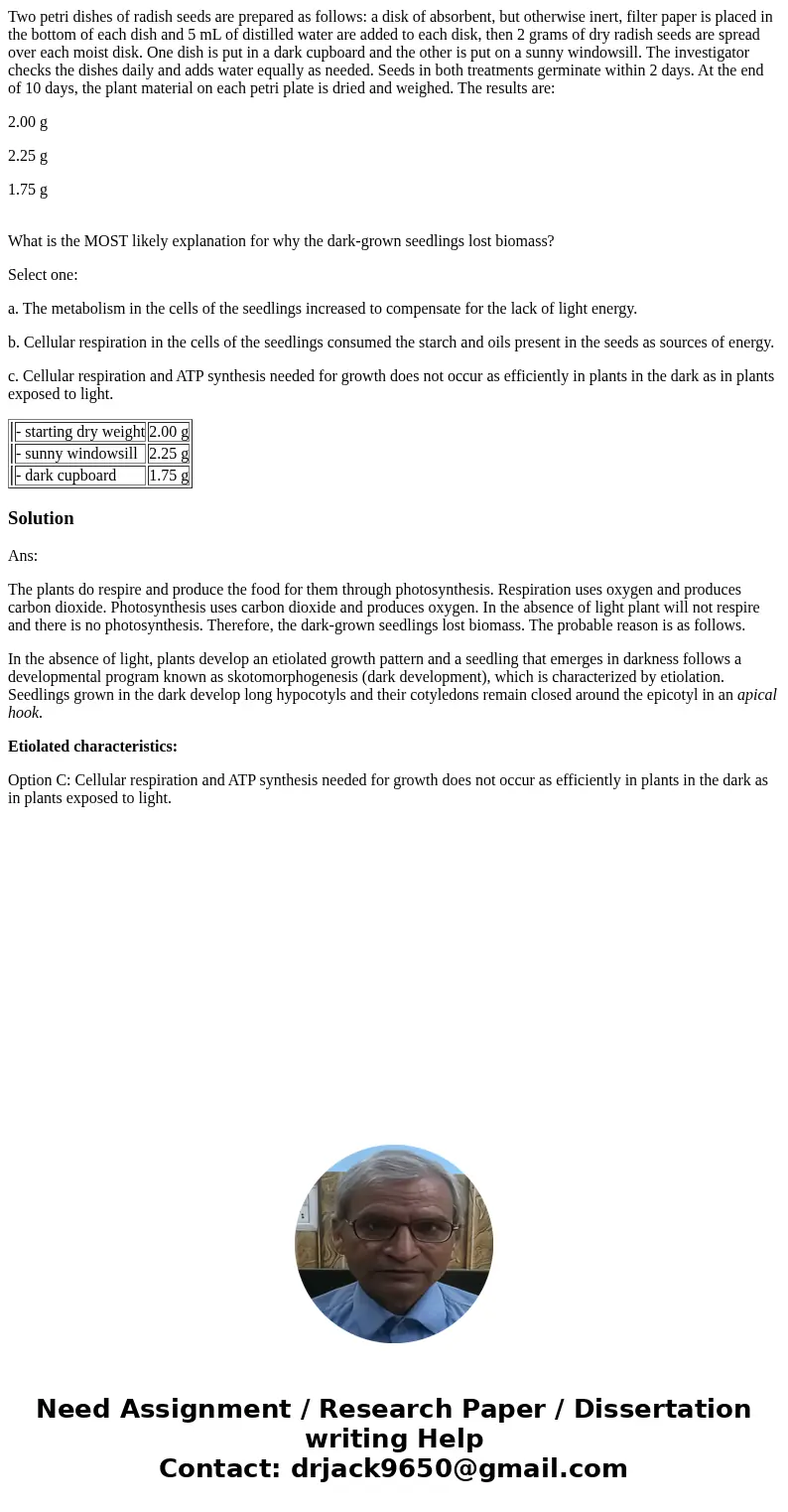Two petri dishes of radish seeds are prepared as follows a d
Two petri dishes of radish seeds are prepared as follows: a disk of absorbent, but otherwise inert, filter paper is placed in the bottom of each dish and 5 mL of distilled water are added to each disk, then 2 grams of dry radish seeds are spread over each moist disk. One dish is put in a dark cupboard and the other is put on a sunny windowsill. The investigator checks the dishes daily and adds water equally as needed. Seeds in both treatments germinate within 2 days. At the end of 10 days, the plant material on each petri plate is dried and weighed. The results are:
2.00 g
2.25 g
1.75 g
What is the MOST likely explanation for why the dark-grown seedlings lost biomass?
Select one:
a. The metabolism in the cells of the seedlings increased to compensate for the lack of light energy.
b. Cellular respiration in the cells of the seedlings consumed the starch and oils present in the seeds as sources of energy.
c. Cellular respiration and ATP synthesis needed for growth does not occur as efficiently in plants in the dark as in plants exposed to light.
| - starting dry weight | 2.00 g | |
| - sunny windowsill | 2.25 g | |
| - dark cupboard | 1.75 g |
Solution
Ans:
The plants do respire and produce the food for them through photosynthesis. Respiration uses oxygen and produces carbon dioxide. Photosynthesis uses carbon dioxide and produces oxygen. In the absence of light plant will not respire and there is no photosynthesis. Therefore, the dark-grown seedlings lost biomass. The probable reason is as follows.
In the absence of light, plants develop an etiolated growth pattern and a seedling that emerges in darkness follows a developmental program known as skotomorphogenesis (dark development), which is characterized by etiolation. Seedlings grown in the dark develop long hypocotyls and their cotyledons remain closed around the epicotyl in an apical hook.
Etiolated characteristics:
Option C: Cellular respiration and ATP synthesis needed for growth does not occur as efficiently in plants in the dark as in plants exposed to light.

 Homework Sourse
Homework Sourse